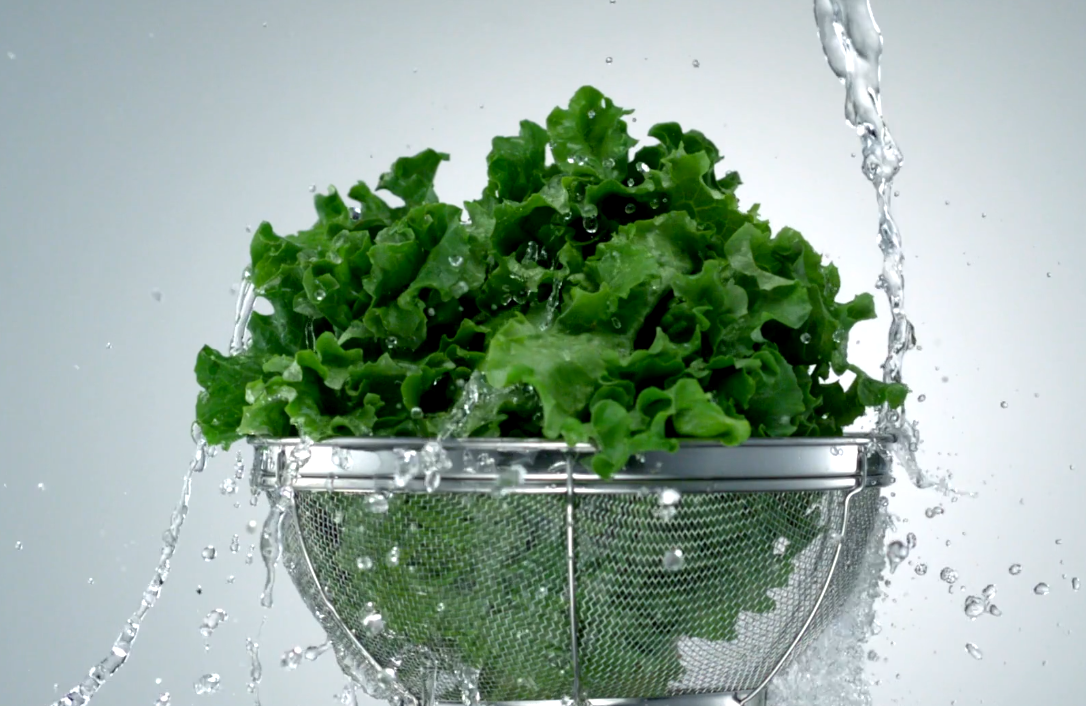When you’re in the produce aisle, choosing between butter and Boston lettuce can feel tricky since they look so similar. Both are soft, leafy greens that work great in salads and wraps, but they’re not exactly the same.
This comparison will break down their key differences in taste, texture, and best uses, helping you pick the right one depending on your dish.
Key Differences
| Butter | Boston | |
|---|---|---|
| Appearance | Small, smooth, delicate leaves | Broad, round leaves with slightly curly edges |
| Texture | Soft, tender, buttery texture | More substantial, crisp, and slightly firmer |
| Flavor | Mild, sweet, slightly nutty | Mild, with a subtle earthy taste |
| Nutritional Highlights | Higher in iron and potassium | Higher in vitamins A and C |
| Best Uses | Wraps, light salads | Sandwiches, robust salads |
Appearance and Texture

When it comes to the appearance and texture of butter and Boston lettuce, both belong to the butterhead variety, yet they exhibit clear distinctions.
Butter Lettuce
Butter lettuce is characterized by small, smooth, and delicate leaves. Its soft texture feels almost velvety, which is why it’s often favored for dishes requiring a tender bite. The leaves are loose and less compact compared to Boston, forming a loose rosette that gives a lighter, airier appearance. Butter leaves are typically pale green, with some varieties showing a slight yellow hue in the center.
Boston Lettuce
On the other hand, it features broad, round leaves that are larger and slightly curly at the edges. It is known for having a more substantial texture while still being tender. Its leaves form a more defined head, making it more compact and slightly heavier. The dark green outer leaves contrast with the lighter green inner leaves, giving it a fuller, more robust appearance.
Texture Comparison
While both types are soft, Boston is a bit firmer and offers a subtle crunch when bitten into. This slight crispness makes it a preferred choice for heartier salads or sandwiches where some structure is needed. Butter leaves are thinner, more pliable, and feel almost silky, making them ideal for wraps or delicate salads where softness is key.
Flavor and Taste

Butter and Boston lettuce share a mild flavor profile, but the subtleties in their taste and how they complement different dishes set them apart.
Butter
Butter lettuce is known for its gentle, sweet flavor with a hint of nuttiness. This makes it perfect for dishes where the lettuce serves as a subtle backdrop rather than the star. It pairs well with citrus-based dressings, light vinaigrettes, and delicate toppings like goat cheese, avocado, or fruit slices. You’ll often see butter lettuce in recipes like:
- Simple green salads: A combination of butter lettuce, thinly sliced radishes, and a lemon vinaigrette creates a fresh, clean dish.
- Wraps and tacos: The pliable leaves make excellent low-carb wraps for fillings like grilled chicken, shrimp, or tofu.
- Gourmet sandwiches: For a luxurious touch, butter lettuce is often added to sandwiches that feature soft cheeses or smoked salmon.
Boston
Boston has a slightly more robust flavor with a fresh, almost earthy undertone. It’s a bit crisper than butter lettuce, giving it more substance in dishes with stronger flavors. The slight crunch makes it perfect for salads with richer, heavier ingredients or sandwiches that need a sturdy base. Common uses include:
- Classic Caesar salads: The crispness of Boston lettuce holds up well with creamy dressings like Caesar or ranch, offering a satisfying bite.
- Hearty sandwiches: Its firmer leaves make it a go-to choice for deli-style sandwiches with meats like turkey or roast beef.
- Stuffed cups: Boston lettuce’s slightly deeper leaves are great for holding fillings like ground beef, spiced chickpeas, or Asian-inspired toppings.
Nutritional Comparison

| Nutrient | Butter | Boston |
|---|---|---|
| Calories (per cup) | 10 | 10 |
| Vitamin A | 42% DV | 53% DV |
| Vitamin C | 14% DV | 10% DV |
| Iron | 6% DV | 4% DV |
| Potassium | 238 mg | 212 mg |
Butter and Boston are both low-calorie, nutrient-dense options, but they do have some differences in their nutritional profiles.
Butter
Butter is a solid source of iron and potassium, making it a beneficial choice for those looking to boost their intake of these minerals. With 6% of your daily iron needs and 238 mg of potassium per serving, it provides a gentle boost to your nutrient intake.
Additionally, it delivers 14% of the daily value (DV) for vitamin C, contributing to collagen production and skin health. The milder vitamin A content (42% DV) still supports eye health, but it’s not as potent as Boston lettuce in this regard.
Boston
Boston lettuce, while similar in many respects, stands out with its higher vitamin A content, providing 53% of the daily value per serving. This makes it particularly valuable for supporting vision and immune health. The slightly lower levels of potassium and iron compared to butter are balanced out by its crispness and versatility in dishes that need more structure.
It is slightly lower in vitamin C than butter lettuce but still delivers a decent 10% of the daily value, which is beneficial for immune support.
Which is Better for Your Dish?

Choosing between butter lettuce and Boston lettuce comes down to the specific needs of your dish.
Butter
If you’re making wraps or light, delicate salads, butter lettuce is your best bet. The soft, tender leaves fold easily without breaking, making them perfect for wraps filled with ingredients like grilled chicken, avocado, or tofu. For salads that rely on a gentle texture, butter lettuce shines when paired with citrus-based dressings or ingredients like berries, nuts, and soft cheeses.
Because of its mild, slightly sweet flavor, butter lettuce works best in dishes where the lettuce doesn’t overpower the other ingredients.
Boston
Boston lettuce, with its firmer, crisper leaves, is ideal for dishes requiring more structure. It holds up better in sandwiches, burgers, and salads with heartier toppings like bacon, roasted vegetables, or creamy dressings.
If you’re looking for a lettuce that adds a bit more crunch while still being tender, Boston lettuce is the way to go. Its slightly earthy flavor works well in recipes with rich or savory elements that benefit from added texture.
Storage Tips for Freshness

Proper storage is crucial for keeping both butter and Boston lettuce fresh and crisp.
- Remove Packaging: As soon as you bring it home, take it out of any store packaging. Pre-packaged lettuce can trap moisture, leading to wilting.
- Rinse Gently: Lightly rinse the leaves to remove any dirt. Be gentle to avoid bruising, especially with butter lettuce, as it’s more delicate.
- Dry Thoroughly: Pat the leaves dry with a paper towel or use a salad spinner. Excess moisture is the enemy of fresh lettuce and can lead to spoilage.
- Wrap in a Towel or Perforated Bag: Wrap in a clean kitchen towel or place it in a perforated bag. This allows airflow while still keeping it hydrated. For added freshness, tuck a dry paper towel into the bag to absorb extra moisture.
- Store in the Crisper Drawer: Place the wrapped lettuce in your refrigerator’s crisper drawer, where the temperature is more stable. Avoid storing lettuce near fruits like apples and bananas that emit ethylene gas, which can cause it to spoil faster.
FAQs
How do you know when butter lettuce is bad?
Butter lettuce is bad when its leaves start to wilt, become slimy, or develop a brownish color. A foul or unpleasant odor is another clear sign that the lettuce has spoiled. Always check for these indicators before using.
Can you substitute butter lettuce for Boston in recipes?
Yes, butter lettuce and Boston lettuce can be used interchangeably in most recipes. While the texture and flavor are slightly different, both lettuces work well in salads, sandwiches, and wraps. Choose based on the dish’s texture needs.
Does butter lettuce last longer than Boston?
Both butter lettuce and Boston lettuce have similar shelf lives when stored properly, typically lasting 5-7 days in the fridge. However, butter lettuce may wilt slightly faster due to its more delicate leaves. Proper storage can help extend freshness for both types.
Why is butter lettuce more expensive than other types?
Butter lettuce tends to be more expensive because of its delicate nature, which makes it more difficult to grow and transport without damage. The tender leaves also require careful handling during harvest, which adds to production costs.
Is Boston lettuce healthier than butter?
Nutritionally, both types are similar, but Boston lettuce has slightly more vitamin A, while butter lettuce has more iron and potassium. The health benefits depend on your specific dietary needs, so both can be great options for a balanced diet.
Summary
When choosing between them, it comes down to your specific needs in terms of flavor, texture, and how you plan to use them. Butter lettuce offers a sweet, tender bite perfect for light salads and wraps, while Boston lettuce provides a sturdier structure with a slightly crisper texture, making it ideal for heartier dishes and sandwiches.
Both types are nutrient-dense and versatile, fitting into a wide range of recipes.

